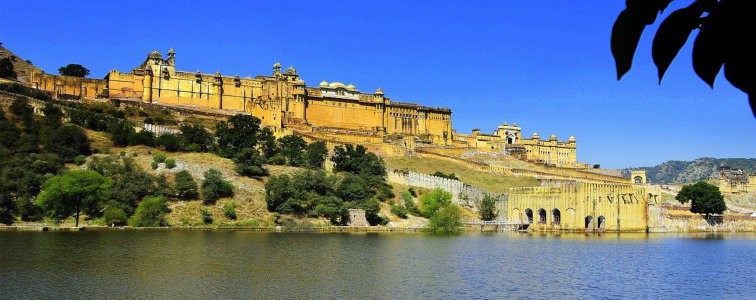Contrasts within the Indian sub-continent are so great that culture shock is invariably the reaction of first-time North American visitors. Many feel initially, like Kipling, that East is East, and West is West, and ne’er the twain shall meet. We were at first no exception to this pattern. Culture shock usually takes the form of sympathetic bewilderment at the first sight of the chaos and confusion of teeming Indian cities, with their gridlocked traffic and sidewalks crowded with shifting tides of humanity. My brother had once been mugged on a Mumbai street during a business trip a few years before, and a former student of mine, born there to Indian parents but raised in Canada, reported on her return her astonishment at having to step over the sleeping ragged homeless on the sidewalk on an evening stroll with her parents in Kolkata. Despite having spent 17 days touring both southern and northern India last March, I still registered a shock of surprise when I caught a glimpse in Delhi of a man shouldered into the street by a wandering cow, an animal sacred to Hindus, as she claimed the sidewalk for herself.
If you know nowhere else, however, you have no basis for comparison, and take all of this in your stride. Mr. Karamveer, our imperturbable driver, certainly did. We first met him at the airport in Jaipur, in Rajasthan, hundreds of miles north of Trivandrum in Kerala where my nephew’s three-day wedding had taken place the week before. Instead of the languid tropical ease of Kerala, with palm trees, warm ocean breezes and luxuriant vegetation, we were startled to discover upon leaving the aircraft how chilly it was in the evening air of a harsher inland mountainous and desert region of the country. The city’s fringe was undergoing rapid development, and the hotel, closer to the centre, all marble, carpet, and impressive chandeliers behind security gates, looked out on an elevated expressway under whose pillars a modicum of shelter from wind and rain was provided for the huddled shapes sleeping on the concrete. Such deprivation always seems worse in a cooler climate.
Our driver picked all five of us and our guide up in his luxurious 12-passenger Traveller bus made on a van chassis in India by a company aptly called Force, which bullied its way past innumerable three-wheeled auto-rickshaws, countless overloaded scooters and motorcycles, some with a family of three or four on each, with the children sandwiched between the parents, past jaywalking pedestrians, all jostling and beeping at intersections without lights and then roaring down rare stretches of empty street where they could each fight for their own right of way in unmarked lanes they each made for themselves, in a mad gulp for space. Yet for all the apparent anarchy, we saw no accidents in Jaipur, or in Agra, or later in Delhi itself. The incessant beeping was not a sign of impatience or road rage, but a perfectly civil way of indicating to the surrounding traffic ‘I’m coming up on your left (or right)’ or ‘be careful, you’re coming quite close to me.’ Our driver never lost his cool, but the advantage of the size and height of his Force bus made other drivers yield more willingly to him than might otherwise have been the case. There were only five of us as passengers, so we had enviable space and height from which to sightsee. What we saw was never dull, only entrancing in its variety. In Jaipur, an enterprising crippled beggar ‘helped’ us across six lanes of traffic by hopping on his one good leg, holding out his crutch as a brave but ineffective barrier to waves of hurrying traffic.





